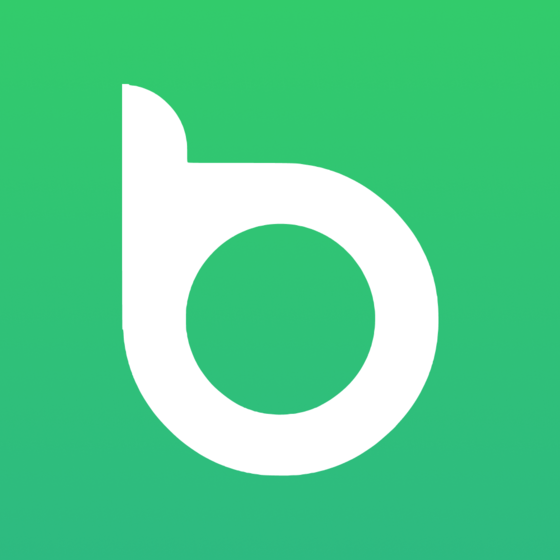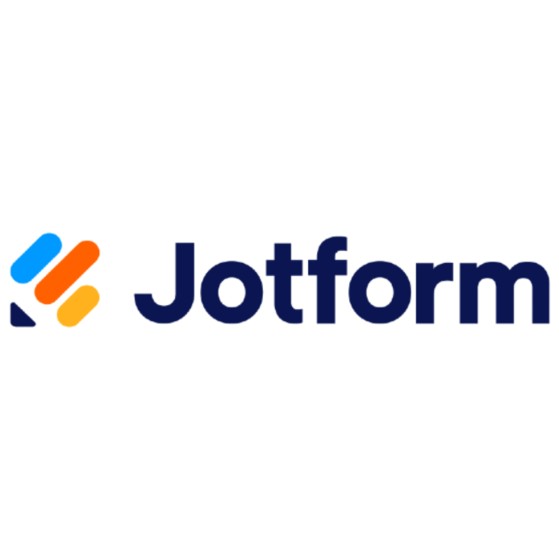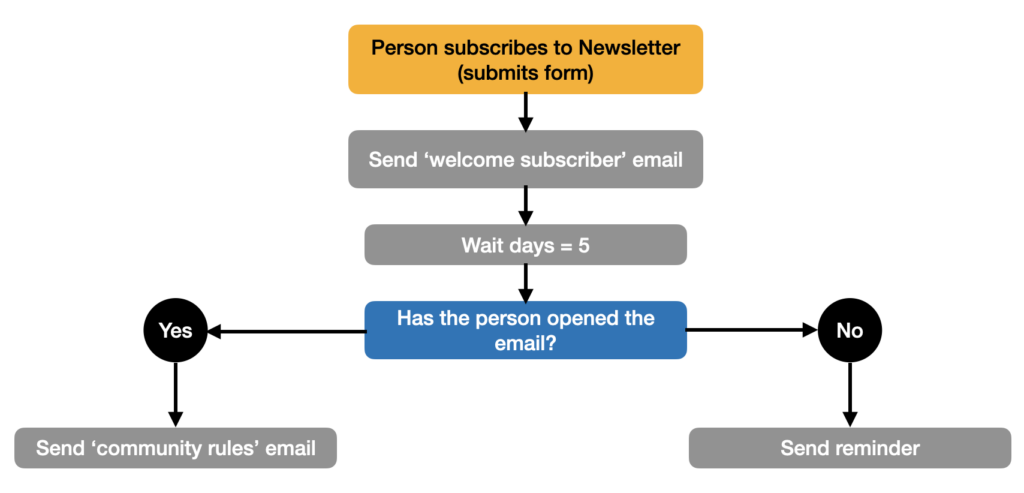10 Best Workflow Automation Software List
Here's my pick of the 10 best software from the 20 tools reviewed.
Get free help from our HR software advisors to find your match.
Managing complex projects manually soon becomes overwhelming. You make mistakes, miss necessary steps, and your team members get lost and confused in the resulting mess. That’s no way to run a business. Fortunately, workflow automation software is here to help.
Workflow automation software uses rule-based logic to run sequences of tasks without human intervention. You set up the rules once, and then the software takes care of getting things done. All you have to do is sit back, monitor progress, and hope you didn't mess up any of the steps, or it will need your intervention.
How I Picked The Best Workflow Automation Software
In picking the best workflow automation tool, I first researched the most popular software on the market for its reviews and user interface. Then I shortlisted based on factors that make software a good automation tool for any team. Finally, I used my experience in project automation to select the criteria by which I would evaluate the tools and inform my overviews.
Here’s a summary of my evaluation criteria:
User Interface (UI)
I look for workflow management tools that are visually attractive. Building workflow automations requires concentration, and you don't need a tool that requires brain power to figure it out.
Usability
I focus on all the ways in which the software helps you automate a manual process. This includes the use of a drag-and-drop builder
Integrations
I look for integrations with popular productivity apps and business tools. This includes built-in integrations with common apps like Google Drive or Slack, integrations through 3rd party software like Zapier, and custom integrations.
Pricing
I look for workflow automation that’s affordable, even for smaller organizations. Therefore, I include information on tool pricing based on monthly payments, free trials, demos and any information I find useful for you.
-

Rippling
Visit WebsiteThis is an aggregated rating for this tool including ratings from Crozdesk users and ratings from other sites.4.8 -

Willo
Visit WebsiteThis is an aggregated rating for this tool including ratings from Crozdesk users and ratings from other sites.4.8 -

Boon
Visit WebsiteThis is an aggregated rating for this tool including ratings from Crozdesk users and ratings from other sites.4.7
Overviews of the Best Workflow Automation Software
Here’s a brief description of each workflow automation system to showcase each tool’s best use case, some noteworthy features, and screenshots to give a snapshot of the user interface.
monday.com is a work management platform that has an automation module that helps you be more productive at work. The workflow automation features cut out repetitive tasks and ensure that your processes become standardized.
Why I picked monday.com: You've seen how many ads are out there talking about this tool. I have too. Luckily, they live up to the hype, as—in my opinion—the automations in this platform are exquisitely developed. I found the automations builder extremely easy to use, and it will let you build dozens of automations in minutes. You can either build automations from scratch or select one of the many automation templates available in the platform. These automations also go beyond the tool and extend to other tools it integrates with, like Slack or Clearbit.
What I like the most is that these automations are not exclusive to one of their products. You will find this in all three versions of monday.com (work, dev, and sales).
monday.com Standout Features & Integrations
Features include time-based automations that allow you to schedule recurring tasks or notifications at specific intervals. monday.com also supports dependency-based workflows, where tasks are automatically updated or triggered based on the completion of preceding tasks. Additionally, the platform's formula column allows you to automate calculations within your boards, making data-driven workflows more efficient.
Integrations include project management apps like Slack, Google Drive, Gmail, Typeform, Trello, Twilio, Google Calendar, Jira, GitHub, Trello, Dropbox, and Typeform. There are also thousands of additional apps you can connect to using a paid Zapier account.
Pros and cons
Pros:
- Easy to create notification flows
- Long list of supported integrations
- Easy to customize a workflow or board
Cons:
- May be too robust for small teams
- Complex pricing rubric
New Product Updates from monday.com
Update Item & Subitem Blocks
monday.com introduces Update Item & Subitem blocks for streamlined workflows, allowing multiple column updates simultaneously to enhance efficiency and maintain consistency. For more details, visit: monday.com/whats-new.
ClickUp is a cloud-based project management and team collaboration platform that will help you bring all of your tools into one place and create automated workflows that save you time.
Why I picked ClickUp: I chose ClickUp for this list for its flexible approach creating automations. I love how the automations module lets you create combinations of triggers and actions that replace manual procedures. You can choose from the hundreds of prebuilt templates or create custom automations in a drag-and-drop interface. Additionally, you can chain multiple actions together and set conditions to determine when your automations should run. The software can send notifications when specified events occur.
However, I should note that you need the owner or admin of the software to enable automations from the ClickApps menu before you do anything else. Otherwise, you won't see the automations view in your instance of the software.
ClickUp Standout Features & Integrations
Features include custom recurring task automations that schedule repetitive tasks based on triggers or timelines. ClickUp’s goal-tracking automation also links tasks directly to objectives and automatically updates progress as work is completed. Additionally, the platform's time tracking automation starts and stops timers automatically, ensuring accurate time logs without manual input.
Integrations include a wide range of business software, including Slack, Github, real-time reporting, whiteboards and shared documents for collaboration, task management with different views, goal tracking, and templates. You can also access thousands of additional apps using Zapier (requires paid account).
Creatio CRM is a comprehensive customer relationship management tool designed for businesses of all sizes, from SMBs to large enterprises.
Why I picked CRM Creatio: CRM Creatio offers a more targeted approach than the Studio Creatio suite, focusing specifically on customer, marketing, and sales processes. It offers a no-code platform and drag-and-drop designer to automate workflows, allowing businesses to tailor their processes to their unique industry and needs.
Additionally, CRM Creatio offers a centralized workspace known as Creatio Copilot, which aids in the configuration and deployment of AI use cases. This feature is particularly advantageous for businesses looking to leverage AI to further enhance their processes and gain actionable insights. The platform's visual analytics tools also help in identifying bottlenecks and optimizing workflows, ensuring that processes run smoothly and efficiently.
CRM Creatio Standout Features & Integrations
Features include AI-powered workflow recommendations that help businesses optimize processes by suggesting improvements based on real-time data. CRM Creatio also supports multi-channel communication automations that enable interaction with customers across email, social media, and other platforms.
Integrations include Accelo, Act!, ActiveCampaign, Acumatica, Adobe Analytics, Asana, Microsoft Exchange, Excel, Mailchimp, HubSpot Marketing Hub, Google Calendar, and Tableau.
Nanonets is an AI-driven platform that automates the processing of documents and manages workflows across sectors like finance, healthcare, and logistics. It efficiently handles tasks such as data extraction, invoice processing, and accounts payable, minimizing manual labor and reducing processing times.
Why I picked Nanonets: I chose Nanonets for its AI-driven capabilities that can automate complex workflows using natural language processing, allowing you to manage workflows that interact with various apps and data sources. The platform supports custom Language Learning Models (LLMs) for tailored responses and actions, enhancing workflow customization to meet specific business needs. This lets you design workflows that are automated and adaptive to unique business environments.
Additionally, Nanonets offers a human-in-the-loop feature for manual approvals, providing an extra layer of accuracy in automated workflows. It's also a no-code platform, so you can automate these workflows without coding expertise.
Nanonets Standout Features & Integrations
Features include multi-step workflow automations that allow users to design end-to-end workflows that handle tasks such as data validation, approvals, and updates. Additionally, Nanonets offers real-time data monitoring to provide instant updates on workflow status.
Integrations include Quickbooks, Salesforce, Google Sheets, Dropbox, and Zapier.
Qntrl is an advanced workflow orchestration software that improves productivity and efficiency in the workplace. At its core, it automates processes across different applications to reduce manual data entry and speed up workflows.
Why I picked Qntrl: I picked Qntrl for this list because it provides a unified platform that can integrate with existing systems, eliminating the need for multiple tools or applications to create automations. It allows you to create automated processes quickly and easily without extensive technical expertise or coding knowledge. You can create workflows that are triggered by events or conditions, which I believe should make it easier to customize the process based on preferences. You can even set up automated responses when certain conditions are met, or an event occurs.
Qntrl Standout Features & Integrations
Features include advanced SLA management that allows you to define and monitor timelines for each workflow step to ensure tasks are completed on time. Additionally, Qntrl offers dynamic conditional workflows that automatically routs and assigns tasks based on real-time data and specified conditions.
Integrations include applications such as Salesforce, Dropbox, MS Teams, Harvest, Google Sheets, and Slack. You can also create as many custom integrations as you want using Webhooks and its API.
Miro is a collaborative online workspace that offers a visual platform for innovation, providing features such as visual project management, diagramming, process mapping, product development workflows, and more.
Why I picked Miro: While most workflow automation features are only possible with third-party integrations, Miro offers some key in-platform automation capabilities. These include templates for different types of workflows with customizable drag-and-drop interfaces, such as project planning, brainstorming, and sprints. It also offers smart diagramming with features like auto-align and auto-layout that can help automate the organization of elements within a board.
With integrations, Miro offers workflow automation like syncing project cards, providing updates in communication channels, and automating other project management functions.
Miro Standout Features & Integrations
Features include interactive automation triggers within boards that help teams set up actions, such as assigning tasks or sending notifications, based on specific changes or updates. Miro also supports cross-board linking to connect workflows and streamline processes across multiple projects. Additionally, the platform provides advanced process visualization tools, such as swimlane diagrams, to organize workflows clearly and effectively for better alignment and decision-making.
Integrations include Box, Airtable, Notion, Azure, Webex, Jira, Asana, Microsoft Teams, Google Drive, Slack, Monday.com, Confluence, Zoom, and Figma.
Jotform Enterprise provides a powerful, easy-to-use data collection process for businesses of all kinds who are looking to optimize their workflow automation processes. According to my research, Jotform gives businesses access to offline forms, surveys for product feedback and reviews, collaboration tools, approvals for automated workflows, and conditional logic for a personalized customer form experience. They specialize in B2B businesses but can be adapted to a wide range of customer markets and industries.
Why I picked Jotform Enterprise: One of the things I most admire about Jotform Enterprise is its flexibility, which allows you to build complex systems that are tailored specifically to your needs. I chose Jotform for this list, however, primarily because it offers an easy-to-use form builder that allows you to quickly create forms for any purpose, from collecting customer information to helping employees to track their progress on projects. The form builder includes hundreds of customizable templates that can be used as a starting point for creating your forms. You can create an order form that integrates with a payment processing service or set up an automated system that sends out email notifications when someone fills out a form.
Jotform Enterprise Standout Features & Integrations
Features include support for multi-step approval processes, which allows businesses to automate complex workflows that require input from multiple stakeholders. Additionally, Jotform's HIPAA-compliant hosting option ensures that workflows involving sensitive data meet stringent privacy and security standards.
Integrations include Google Drive, Google Sheets, Slack, Dropbox, PayPal, Stripe, Salesforce, Mailchimp, and Airtable. It also can integrate with Zapier to automate workflows and connect JotForm with over 1,000 other apps and services but this requires a Zapier account and may incur additional costs.
Jotform Workflows is a no-code automation tool designed to improve workflow management and streamline approval processes within organizations. It allows users to build customized workflows that automate tasks and enhance collaboration through an intuitive drag-and-drop interface.
Why I picked Jotform Workflows: In my opinion, Jotform Workflows is standout option for workflow automation, primarily due to its intuitive no-code workflow builder. With this feature, you can design custom workflows with ease using a drag-and-drop interface, making it accessible for users without a technical background.
Additionally, I found Jotform Workflows' strong automation capabilities, including conditional logic, parallel processing, and automated approvals, highly valuable as they manage to effortlessly address diverse organizational needs such as employee onboarding and budget approvals.
Jotform Workflows Standout Features & Integrations
Features include real-time progress tracking that allows teams to monitor the status of workflows and approvals for improved transparency and accountability. Jotform Workflows also supports advanced task dependencies, enabling users to establish relationships between tasks to ensure processes are executed in the correct order. Additionally, the platform offers extensive reporting tools that can provide insights into workflow performance and identify areas for optimization.
Integrations include several top software, such as Microsoft Teams, Slack, Google Sheets, Zoom, Google Calendar, Zoho CRM, and Pipedrive. Jotform Workflows also connects to Zapier to help users connect to thousands of other software options.
Studio Creatio is a no-code platform that enables businesses to automate workflows and build applications without the need for extensive coding knowledge.
Why I picked Studio Creatio: The platform features a No-Code Designer, which includes tools for creating and modifying pages, views, data models, workflows, and integrations within a single workspace. The platform also offers industry-specific solutions for sectors such as banking, credit unions, and insurance.
Studio Creatio's workflow automation software is part of this no-code platform. Users can design, automate, and optimize workflows with an intuitive visual interface that requires no prior programming knowledge. This feature makes the technology accessible to a broad range of professionals to help contribute to the digital transformation of their business. The platform also integrates with existing business systems, offers real-time monitoring and reporting, and includes advanced reporting and analytics features to enhance operational efficiency and productivity.
Studio Creatio Standout Features & Integrations
Features include case management capabilities that enable businesses to adapt workflows in real-time based on unique scenarios. Studio Creatio also supports AI-powered process recommendations that can help users identify opportunities to optimize and automate their workflows further.
Integrations include Chat Master, PandaDoc, SharePoint, Jira, Calendly, Zoom, Shopify, Asterisk, Microsoft Teams, Zapier, Quickbooks, SAP BusinessOne, and more.
Camunda is a process orchestration solution that is mainly designed for end-to-end automation. It is an open-source workflow automation software solution that provides users with a simple yet highly intuitive drag-and-drop process builder. This feature makes the platform flexible enough for a wide variety of use cases.
Why I picked Camunda: This software is used by different types of businesses, ranging from media and entertainment to financial services. I particularly selected Camunda for this list because it is robust enough to facilitate endpoint diversity, meaning it can be utilized to implement various automation solutions across multiple possible endpoints. This includes different devices and systems, as well as key human resources.
Camunda's ability to handle complex logic with branching also caught my attention. It features advanced workflow patterns that enable technical and non-technical users to collaborate and design complex business processes and automated workflows.
Camunda has dynamic parallel execution as well, which allows for the organization and optimization of multiple tasks simultaneously. Camunda is powered by Zeebe’s cloud-native workflow and decision engine. I especially like how this enables dev teams to automate workflows and processes at scale with efficiency and speed. Zeebe is the workflow and decision engine that powers the latest iteration of the software; i.e., the Camunda Platform 8.
Camunda Standout Features & Integrations
Features include event-driven automation capabilities that allow workflows to trigger actions based on specific events. Camunda also provides robust error-handling mechanisms that help workflows automatically detect and resolve issues during execution. Additionally, the platform supports versioning for workflows, allowing teams to manage updates and maintain consistency across process iterations without disruption.
Integrations include Salesforce, Microsoft Dynamics, SAP, Oracle, Microsoft SharePoint, Alfresco, Apache Kafka, RabbitMQ, MySQL, PostgreSQL, Microsoft SQL Server, Amazon Web Services (AWS), Microsoft Azure, Google Cloud Platform (GCP), Signavio, Bizagi, and ProcesMaker.
The 10 Best Workflow Automation Software Comparison Chart
This comparison chart summarizes basic details about each of my top workflow automation software selections. You can view pricing details and the availability of free trials or demos side-by-side to help you find the best platform that works for your budget.
| Tool | Best For | Trial Info | Price | ||
|---|---|---|---|---|---|
| 1 | Best for standardizing processes | 14-day free trial + free plan available | From $8/user/month (billed annually) | Website | |
| 2 | Best shared workflows with external apps | 14-day free trial + free plan available | From $7/user/month | Website | |
| 3 | Best for customer and sales-related workflows | 14-day free trial | From $25/user/month | Website | |
| 4 | Best for custom LLMs | Free trial for 500 pages | From $499/month for up to 5,000 pages (or invoices) | Website | |
| 5 | Best for cross-functional processes | 15-day free trial | From $8/user/month | Website | |
| 6 | Best for drag-and-drop workflows | Free plan available | From $8/user/month | Website | |
| 7 | Best for data collection projects | Free plan available | From $34/month (billed annually) | Website | |
| 8 | Best for no-code workflow building | Free plan available | From $34/month (billed annually) | Website | |
| 9 | Best for no-code workflow automation | 14-day free trial | From $25/user/month | Website | |
| 10 | Best for developer-friendly interfaces | 30-day free trial | From $49/month | Website |
Other Tools
- Kissflow Workflow
For non-technical users
- Adobe Workfront
For comprehensive project oversight
- Pneumatic Workflow
For templated workflows
- Height
For projects across different teams
- Integrately
For an AI automation builder
- Boomi Flow
For low-code workflow automation
- Assembly
For customizable templates
- Smartsheet
For dynamic workflows
- SysAid
For IT service management
- Hive
For beginners
Workflow Automation FAQs
Find answers to common questions about this topic.
What is workflow automation?
What is workflow automation software?
Why is workflow automation important?
What is a workflow automation example?
What features should I look for when selecting workflow automation software?
What other tools have workflow automation?
What's Next?
Also, make sure you subscribe to the Digital Project Manager newsletter. You’ll get fascinating insights into this fast-moving world, together with the information you need to stay on top of your professional game.
Related tool lists:

























